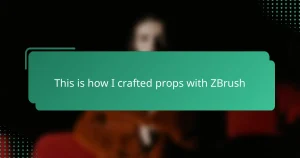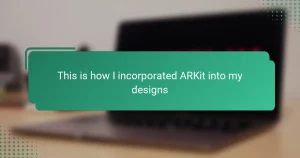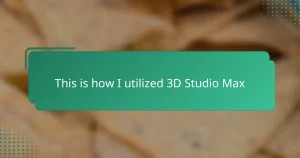Key takeaways
- Mastering the basics of Autodesk Maya, such as the interface and polygon modeling, is crucial for effective creativity and workflow.
- Designing sci-fi props requires a balance between creativity and practical design, ensuring each element serves a narrative purpose.
- Customizing the user interface, saving incrementally, and learning new features weekly can significantly enhance productivity in Maya.
- Effective organization through layers, groups, and clean topology is essential for efficient prop creation in complex projects.
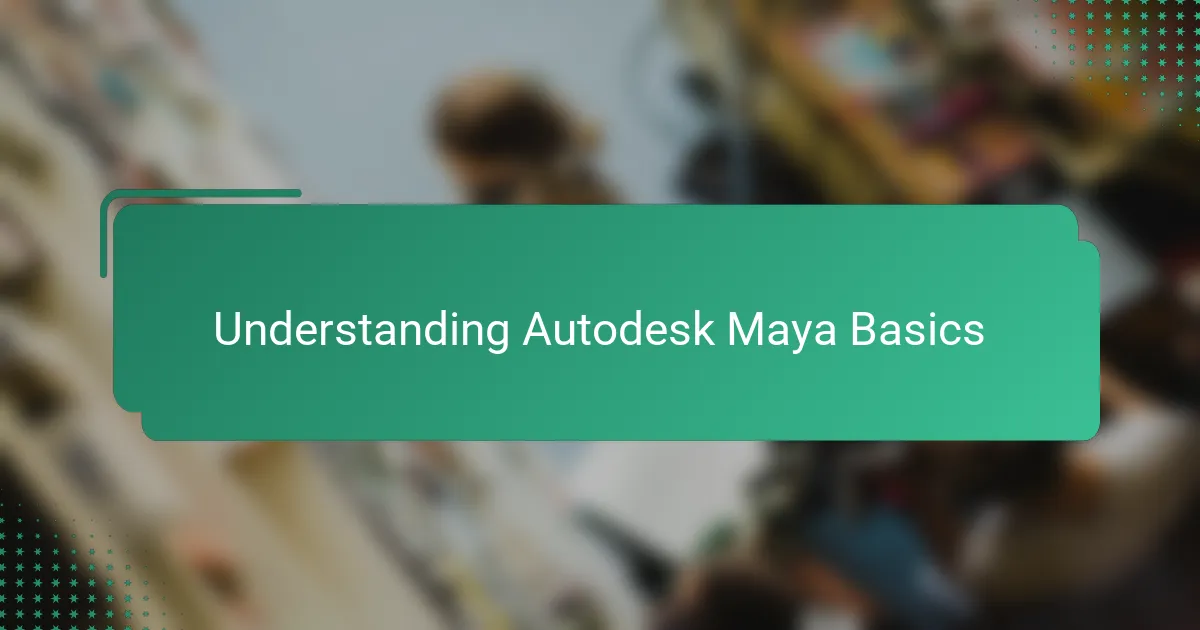
Understanding Autodesk Maya Basics
Getting started with Autodesk Maya can feel like opening a door to a whole new universe, especially when you realize how vast its toolset is. From my early days, grasping the basics like the interface layout and navigation controls was a crucial step that saved me hours of frustration later on. Have you ever felt overwhelmed by software that promises endless possibilities but hides its essentials behind complex menus? That’s exactly what Maya does initially, but mastering the basics lays a solid foundation for creativity.
I remember the first time I experimented with polygon modeling—it was both thrilling and intimidating. Understanding how to manipulate vertices, edges, and faces gave me a sense of control, like shaping clay in a digital space. This hands-on approach to the basics made the learning curve feel less steep and more like a creative challenge.
One thing that always helped me was breaking down complex tasks into small, manageable chunks. Learning how to set up a simple scene, add lights, and apply materials may seem basic, but these are the building blocks of crafting believable sci-fi props. Don’t rush through these steps; they’re the quiet heroes behind every stunning render I’ve created.
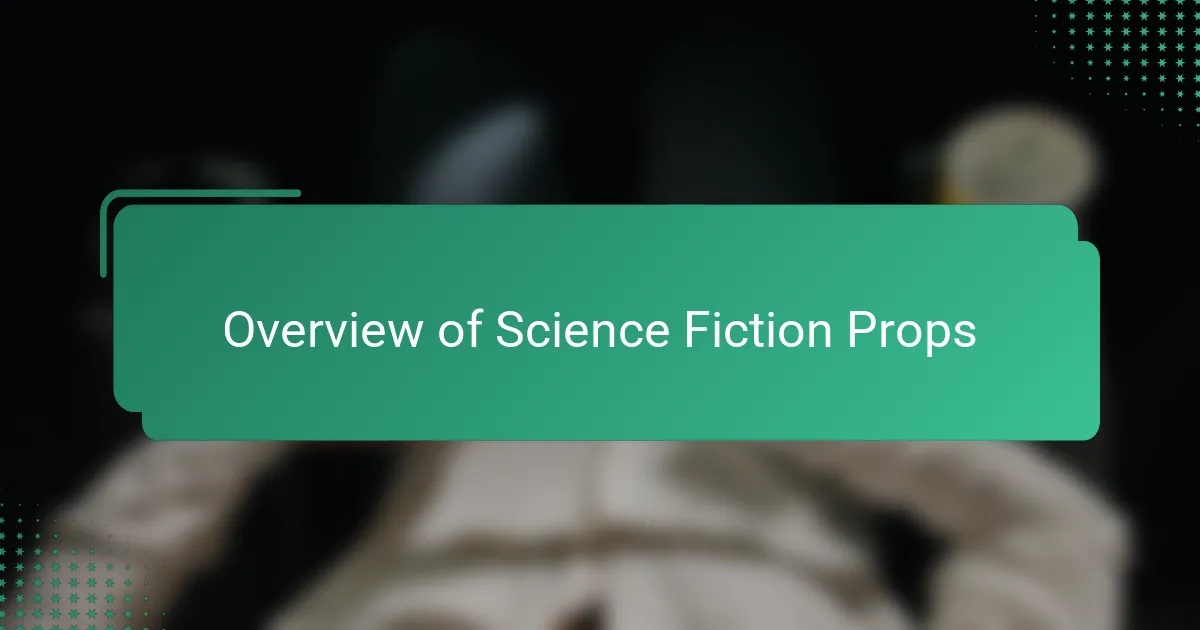
Overview of Science Fiction Props
Science fiction props have always fascinated me because they blend imagination with intricate design. When I first saw a detailed starship console or a futuristic weapon up close, I wondered how artists managed to create such convincing objects that seem both alien and believable. These props aren’t just random gadgets; they tell stories and set the tone for entire worlds.
Working on my own sci-fi props, I realized how much attention goes into every curve, texture, and light reflection. Each element serves a purpose, either to suggest advanced technology or to hint at the culture behind it. Isn’t it amazing how a small prop can carry so much narrative weight without a single word spoken?
What truly intrigues me is the mix of old and new—how sci-fi props often combine sleek futuristic designs with rugged, practical details. This contrast keeps things grounded and relatable, even when the setting is light-years away. It’s this balance that makes designing sci-fi props both challenging and endlessly rewarding.
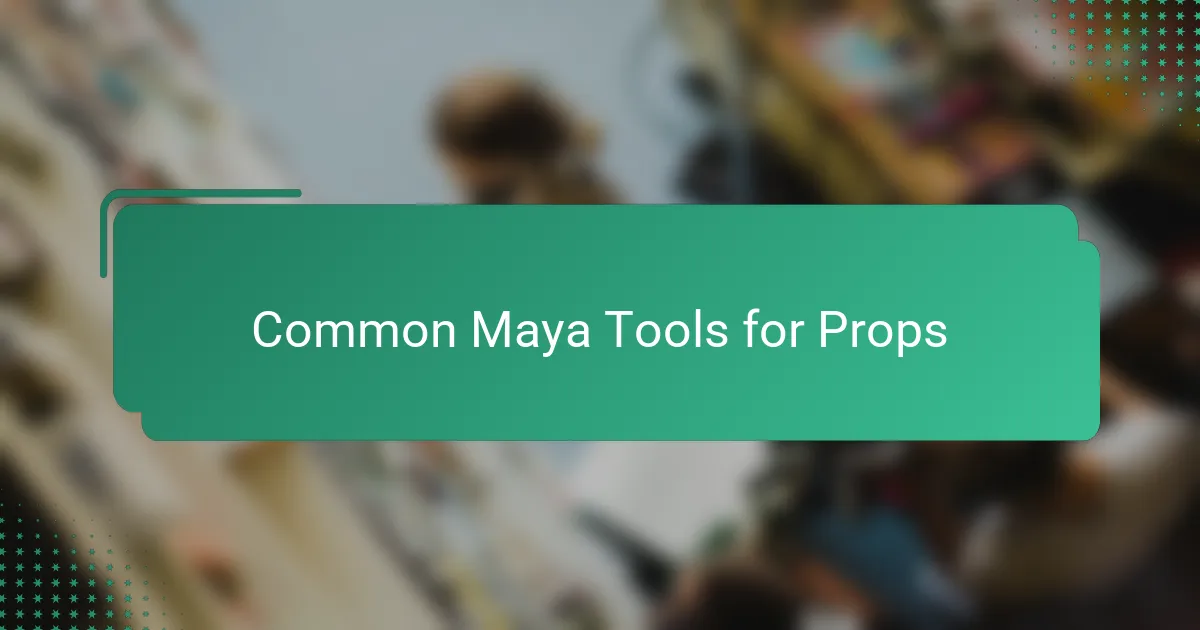
Common Maya Tools for Props
One of the Maya tools I find indispensable for creating sci-fi props is the Extrude function. When I first used it, the ability to pull out faces from a simple shape and instantly start forming complex surfaces felt like magic. Have you ever tried sculpting by hand and wished those intuitive moves translated directly into your 3D model? Extrude lets me do just that, turning basic geometry into detailed panels and protrusions that scream futuristic tech.
Another tool I keep coming back to is the Bevel. It might seem simple, just rounding off edges, but in my experience, it’s what transforms a blocky shape into something believable. Sharp edges rarely appear in real-world objects, especially in props meant to look aged or used. Adding a slight bevel gives my models that subtle, worn realism, which I think makes all the difference between looking digital and looking authentic.
Finally, the Component Mode has been a game-changer for me. Being able to select and manipulate individual vertices, edges, or faces feels like having total control over every curve and angle. It reminds me of working with physical materials where every tiny adjustment counts toward the final look. Isn’t that level of precision what really separates amateur models from professional ones? Maya’s flexibility here lets me obsess over details without getting stuck in tedious steps.
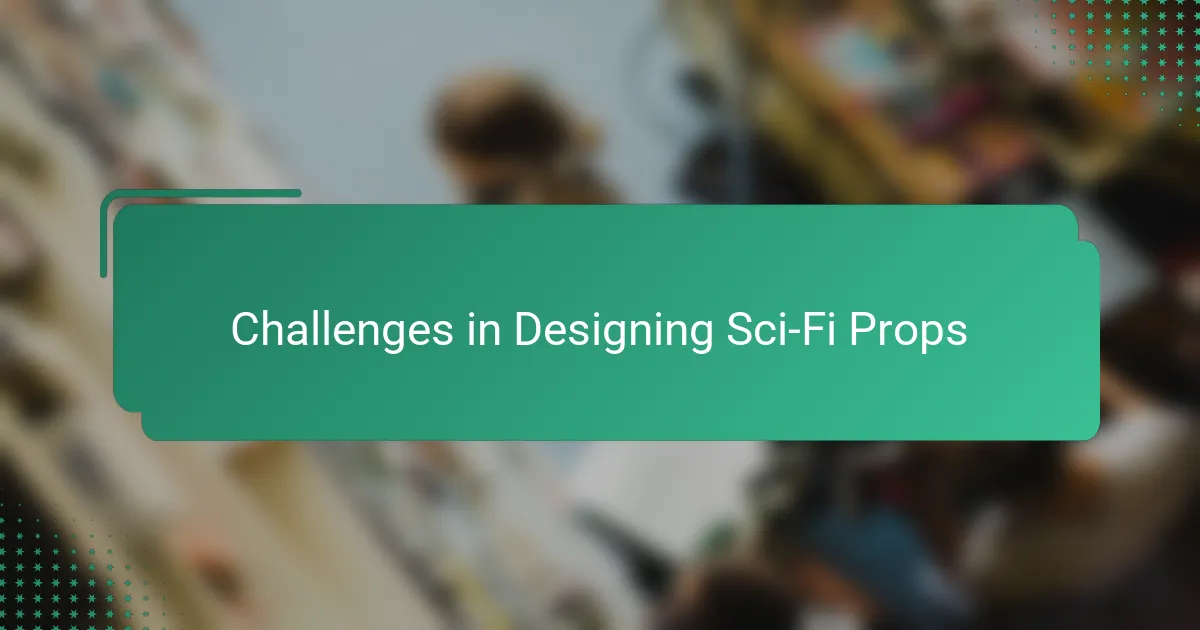
Challenges in Designing Sci-Fi Props
Designing sci-fi props often feels like trying to bring the impossible to life. I remember struggling with concepts that sounded cool in theory but became a nightmare when I tried to model them—like how do you make something look advanced but functional? It’s tricky balancing creativity with practical design limits, especially when you want every detail to tell a story without overwhelming the viewer.
One challenge I consistently face is finding the right level of complexity. Too simple, and the prop feels generic; too detailed, and it looks cluttered or unrealistic. Have you ever spent hours tweaking tiny components only to realize the overall shape lost its impact? It’s a delicate dance between intricate features and clear silhouettes that I think defines good sci-fi design.
Texture and material are another hurdle. In my experience, a prop’s surface can make or break the illusion of authenticity. When I apply materials in Maya, I often wrestle with making metallics shine just enough or adding wear without turning the prop into a mess. Getting these subtle cues right is what transforms a model from a static object into a believable piece of an imagined world.
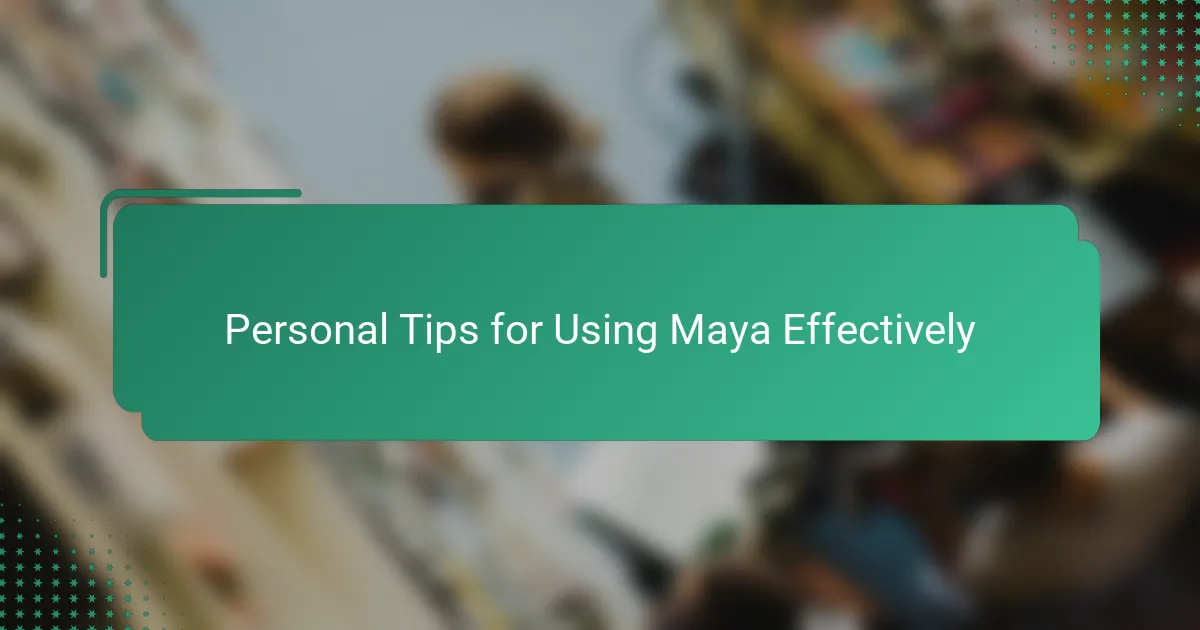
Personal Tips for Using Maya Effectively
One tip that has really helped me use Maya more effectively is customizing the user interface to fit my workflow. Early on, I found myself wasting time hunting through menus for the same tools, so I started creating custom shelves with my most-used functions. Have you ever felt like your creative momentum was broken just because of a slow click or two? Streamlining these little things keeps me in the right headspace to focus on designing rather than navigating.
Another habit I developed is saving incremental versions frequently. I can’t overstate how many times this saved me from losing hours of intricate work due to crashes or accidental mistakes. At first, it felt tedious to stop and save so often, but now I think of it as a safety net that lets me experiment boldly without fear. Isn’t the freedom to try new ideas without anxiety one of the best things a creative tool can offer?
Finally, I make it a point to learn one new feature or shortcut each week. Maya’s depth can be intimidating, but breaking down its complexity into bite-sized lessons keeps me improving without overwhelm. For example, mastering the Wrap Deformer took my sci-fi prop animations to a new level, making curves and bends feel natural instead of robotic. What small Maya skill could you focus on this week to push your projects forward?

Optimizing Workflow for Prop Creation
When it comes to optimizing my workflow in Maya for prop creation, one game-changer has been setting up custom hotkeys and marking menus. I remember how much time I wasted hunting through menus before realizing that tailoring controls to my habits made everything flow faster and felt more intuitive. Have you noticed how even small frustrations can really break your creative rhythm? Streamlining those steps keeps me focused and in the zone.
Another habit I picked up is using layers and groups strategically. At first, I tried to manage everything in one scene, which quickly became chaotic, especially with complex sci-fi props involving tons of parts. Breaking down the model into manageable pieces lets me isolate details without losing sight of the whole, which I find essential for staying organized and efficient.
Lastly, I can’t stress enough the importance of clean topology early on. I’ve learned the hard way that rushing through the base mesh leads to headaches during detailing and texturing. Taking a bit more time upfront to optimize polygons pays off massively later—it’s like laying a solid foundation before building an elaborate structure. Don’t you agree that good preparation is the secret to smooth progress?
